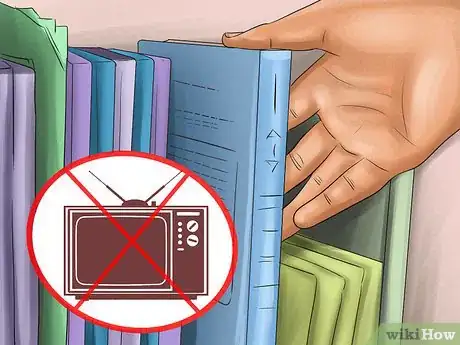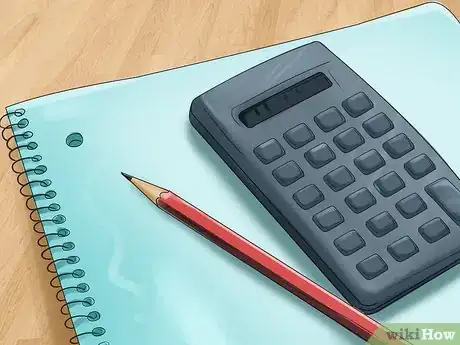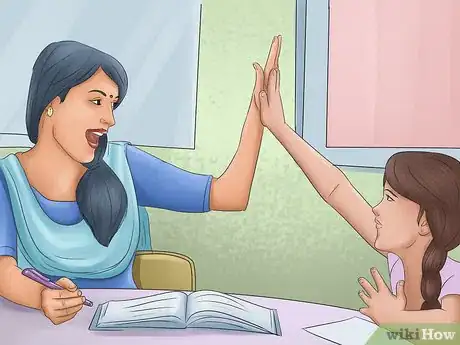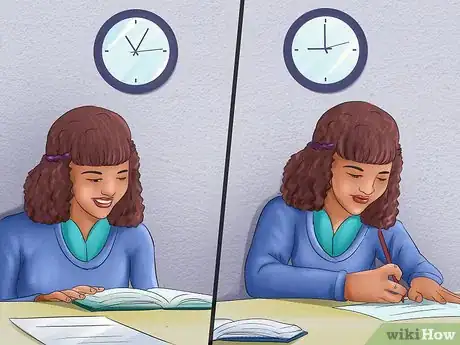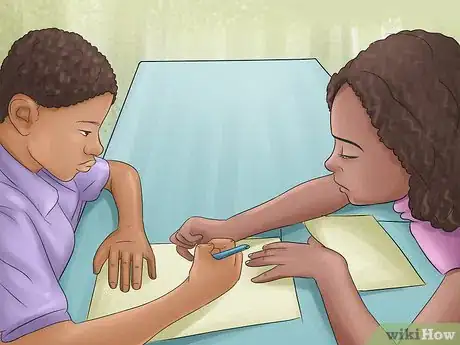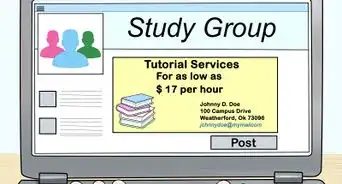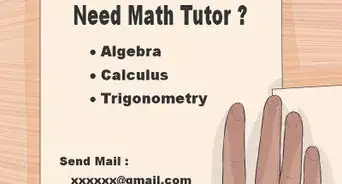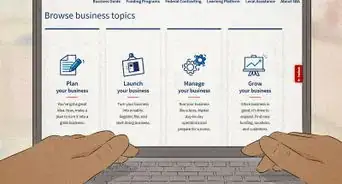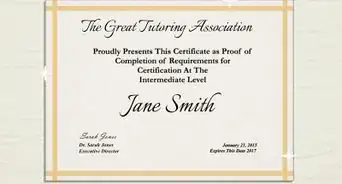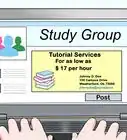This article was co-authored by Sean Alexander, MS. Sean Alexander is an Academic Tutor specializing in teaching mathematics and physics. Sean is the Owner of Alexander Tutoring, an academic tutoring business that provides personalized studying sessions focused on mathematics and physics. With over 15 years of experience, Sean has worked as a physics and math instructor and tutor for Stanford University, San Francisco State University, and Stanbridge Academy. He holds a BS in Physics from the University of California, Santa Barbara and an MS in Theoretical Physics from San Francisco State University.
wikiHow marks an article as reader-approved once it receives enough positive feedback. In this case, 100% of readers who voted found the article helpful, earning it our reader-approved status.
This article has been viewed 32,256 times.
Tutoring elementary students can be a good way to make money, especially if you live in an area with high demand. However, you'll need to make sure to do a good job in order to have a continuing relationship with the client and eventually create a business.
Steps
Setting Up
-
1Make sure that the environment is calm and focused. Do this whether the child is coming to your home, you are going to theirs, or you're meeting at an outside location. Make sure that distractions like loud music or a TV aren't anywhere close by. Some smart places to tutor are:
- A library
- A classroom
- A coffee shop or cafe
- An office
-
2Figure out what you're doing. Make sure you bring any necessary materials for the job. If you're just helping with homework, bring a pencil and calculator. If you are proofreading a paper, bring a red pen. If you are teaching a new subject, bring some paper. If you are studying for a test, bring some cards. Make sure you have the necessary materials for the job.[1]Advertisement
-
3Make a good first impression. Try to be friendly and funny, but don't act creepy or as if you're just there to hang out. Make sure that the student knows you're only there to help tutor him or her, not be a friend.
- Be on time and be prepared. Listen to anything that the child or parent tells you they want to work on. Listening and meeting their needs is your only job, so make sure that you do it.
Tutoring
-
1Divide up your time efficiently. If you only have one hour and five assignments to go over, go over the most important aspects first and the least important last, in order to ensure that the important stuff gets done.
- If you are spending time studying, make sure you give each study session a designated amount of time so you don't spend the full hour studying for a single test. By doing this, you'll be more efficient and get more accomplished.[2]
-
2Explain things. If a child is having trouble understanding something, don't get frustrated or explain it in a textbook-definition way. Put it into words that he or she understand and relate to.
- By helping them grasp the subject, you're becoming a better teacher than your child's own teacher, which is why you were hired for additional help. Textbooks can be read by anyone. A one-on-one approach is paid for and much harder to come by.
- If a student is really struggling with a subject, try asking them what subjects they enjoy. Try to explain how the subject they are struggling with relates to their favorite. For example, if a students struggles with math but enjoys history, point out the mathematic achievements that have helped society progress throughout history.[3]
-
3Be patient. Sometimes a problem that takes an adult 5 seconds takes a child 5 minutes. Remember that they're learning and trying their best. Be encouraging and assure them that they will understand it eventually. Building their confidence will make them perform better, but shooting them down will make them more likely to fail. By being encouraging and patient, they'll likely do much better.
-
4Be interactive. Talk with the child, their parent, and even their teacher. Know how the child learns best and how you can help them achieve more. By being interactive and aware of how to help, you're going above and beyond as a tutor and will likely be much more successful. Good luck!
Expert Q&A
Did you know you can get expert answers for this article?
Unlock expert answers by supporting wikiHow
-
QuestionHow do I tutor an elementary school student online?
 Sean Alexander, MSSean Alexander is an Academic Tutor specializing in teaching mathematics and physics. Sean is the Owner of Alexander Tutoring, an academic tutoring business that provides personalized studying sessions focused on mathematics and physics. With over 15 years of experience, Sean has worked as a physics and math instructor and tutor for Stanford University, San Francisco State University, and Stanbridge Academy. He holds a BS in Physics from the University of California, Santa Barbara and an MS in Theoretical Physics from San Francisco State University.
Sean Alexander, MSSean Alexander is an Academic Tutor specializing in teaching mathematics and physics. Sean is the Owner of Alexander Tutoring, an academic tutoring business that provides personalized studying sessions focused on mathematics and physics. With over 15 years of experience, Sean has worked as a physics and math instructor and tutor for Stanford University, San Francisco State University, and Stanbridge Academy. He holds a BS in Physics from the University of California, Santa Barbara and an MS in Theoretical Physics from San Francisco State University.
Academic Tutor
-
QuestionHow can I get my students motivated?
 Sean Alexander, MSSean Alexander is an Academic Tutor specializing in teaching mathematics and physics. Sean is the Owner of Alexander Tutoring, an academic tutoring business that provides personalized studying sessions focused on mathematics and physics. With over 15 years of experience, Sean has worked as a physics and math instructor and tutor for Stanford University, San Francisco State University, and Stanbridge Academy. He holds a BS in Physics from the University of California, Santa Barbara and an MS in Theoretical Physics from San Francisco State University.
Sean Alexander, MSSean Alexander is an Academic Tutor specializing in teaching mathematics and physics. Sean is the Owner of Alexander Tutoring, an academic tutoring business that provides personalized studying sessions focused on mathematics and physics. With over 15 years of experience, Sean has worked as a physics and math instructor and tutor for Stanford University, San Francisco State University, and Stanbridge Academy. He holds a BS in Physics from the University of California, Santa Barbara and an MS in Theoretical Physics from San Francisco State University.
Academic Tutor Ask them what they are passionate about. Take those answers and try to see how the subjects are relevant to that. For example, let's say a student loves history but doesn't like math. In terms of history, ask them where they think humans would be if we never figured out math. Try to wrap what they like into all of their subjects like that.
Ask them what they are passionate about. Take those answers and try to see how the subjects are relevant to that. For example, let's say a student loves history but doesn't like math. In terms of history, ask them where they think humans would be if we never figured out math. Try to wrap what they like into all of their subjects like that. -
QuestionHow do I tutor someone without giving away the answer?
 Community AnswerYou have to guide the student through the problem and help them discover the answer on their own. For example, instead of telling them the next step, you can say, "What do you think we should do next?" If their answer is wrong, then you could follow up with, "I'm not sure that's it. What else could we do instead?" Sometimes you may have to give them the answer in order to thoroughly explain how to find it, but you can always give the student more problems to practice with where you don't give them the answer.
Community AnswerYou have to guide the student through the problem and help them discover the answer on their own. For example, instead of telling them the next step, you can say, "What do you think we should do next?" If their answer is wrong, then you could follow up with, "I'm not sure that's it. What else could we do instead?" Sometimes you may have to give them the answer in order to thoroughly explain how to find it, but you can always give the student more problems to practice with where you don't give them the answer.
Warnings
- This only applies to the average elementary student. Special needs children can be different, so consider who you're teaching.⧼thumbs_response⧽
